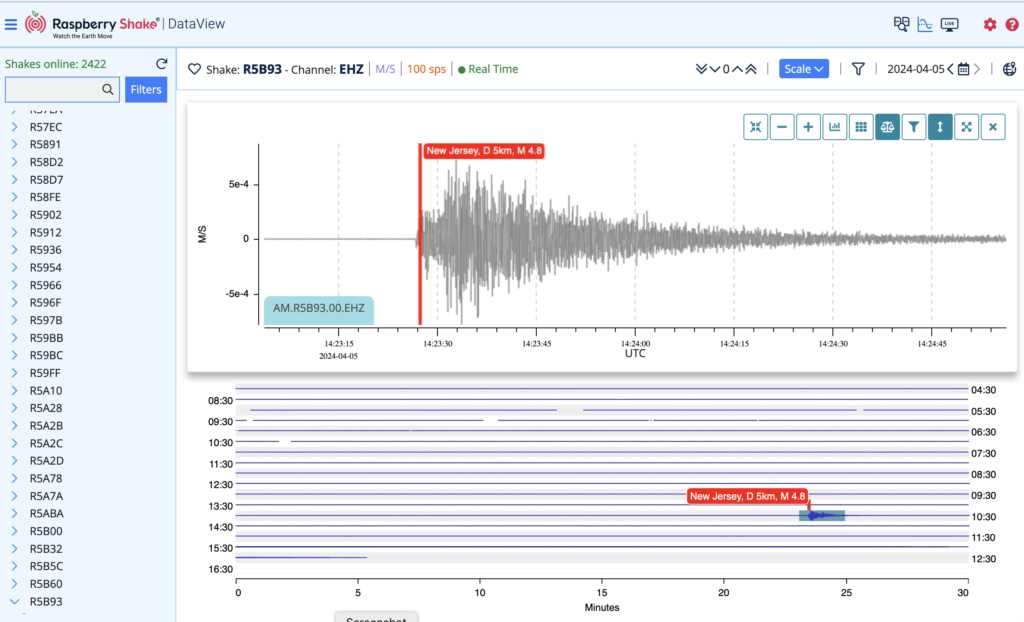Earthquakes: What to know, safety tips
A 4.8 magnitude earthquake centered near Whitehouse Station, N.J., shook the Northeast April 5, according to the U.S. Geological Society. The rumbling could be felt in Easton and throughout the Lehigh Valley.
A Leopard Alert went out to faculty, staff, and students shortly afterward, with a request to report any damage to Public Safety: 610-330-5330.
Director of Public Safety Jeff Troxell said there were no reports of damages or injuries on campus. Northampton County Emergency Management continued to assess the situation.
Easton Fire Chief Henry Hennings told lehighvalleylive.com he was not aware of any damage as of 11 a.m. Friday, April 5.
While many chalked the initial vibration up to a plane overhead or a truck rumbling by, Larry Malinconico, associate professor of geology and environmental geosciences and director of the Technology Clinic, said it continued too long, and he immediately knew it was an earthquake.
“For us in the Geology Department, this was a great teachable moment,” Malinconico says. “It was a demonstrable earthquake with no reports of damage or injuries.”
Malinconico shared an image from the seismograph in Van Wickle Hall that records earthquakes. There are more than a million earthquakes that occur globally every year, but many are minor, he adds.
“East Coast earthquakes are incredibly infrequent,” he says. That’s because the East Coast is on what’s known as a passive margin, unlike active tectonic margins on the West Coast and in other parts of the world.
“The vibrations that we all felt were the result of the release of energy when the fault, which is approximately 25 miles east of us, slipped,” Malinconico says.
After the earthquake, Malinconico started getting calls from students who’ve taken his classes to confirm the quake.
“You learn about this, but until you actually feel the vibrations it’s hard to imagine.”
So what does a geologist do in the seconds after an earthquake?
“I was in my kitchen at the time, and my first reaction was to look around my surroundings—will anything fall, am I in danger?” he says. His wife, also a geologist, was upstairs and called down to him once she felt it. “The higher up you are, the more you’ll feel it.”
While earthquakes don’t happen on the East Coast with the same frequency as the West Coast, it’s good to be prepared.
Not sure what to do in an earthquake? Ready.gov shares the following safety tips to protect yourself and others:
• If you are in a car, pull over and stop. Set your parking brake.
• If you are in bed, turn face down and cover your head and neck with a pillow.
• If you are outdoors, stay outdoors away from buildings.
• If you are inside, stay and do not run outside, and avoid doorways.
Source: Ready.gov
The image above was recorded from the seismograph located in Van Wickle Hall. Malinconico says the bottom portion is a portion of the 24-hour vibration record. The top panel is a blown-up version that shows when the vibrations started around 10:23 a.m. (Photo courtesy Larry Malinconico)
View the real-time record from the seismometer in Van Wickle Hall.
